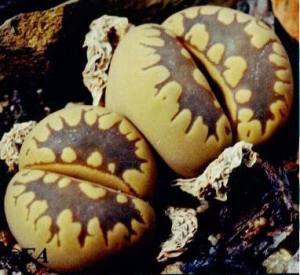What is this?
Also, for your viewing enjoyment, here’s some milkweed and bee balm:

What is this?
Also, for your viewing enjoyment, here’s some milkweed and bee balm:
She’s a fat little beauty, ain’t she?
One of my labmates just gave this to me as a gift (somebody else has the same obsessions!). Euphorbia obesa is native to the great Karoo region of South Africa, where it is endangered. They do so well in cultivation, though, that there are now more of them in pots than there are out in the wild.
My plant is a Mother of Thousands (Kalanchoe daigremontiana), which I got as a freebie from the American Society of Plant Biologists meeting last August. It reproduces asexually by making baby plantlets on the edges of its leaves. Eventually, the baby plantlets will fall off and form new plants that are genetically identical to the original Mother of Thousands.
 I got a lithops, I got a lithops, I got a lithops, hey, hey, hey, hey!
I got a lithops, I got a lithops, I got a lithops, hey, hey, hey, hey!
Lithops plants look like aliens because they’re adapted to one of the most extreme environments on the planet. They’re native to the Namibian Desert, which averages about 5mm of rain. Per year. These little guys survive entirely on the fogs that blow in off of the ocean sometimes.
I stumbled across my lithops at a plant sale fundraiser at grad school last week. As I’d only ever seen lithops at a botanical garden before, I didn’t know you could even buy and sell them. But then there they were, rows and rows of little 2″ pots of them on the table, right next to the cactus. Want.
I started quizzing the guy at the table. How do you take care of these? They were only four dollars each, but I didn’t want to kill one. Turns out they’re easy to take care of as long as you remember two things: don’t water them, and give them lots of light. Up here in Minnesota, I’m going to have to supplement them with an artificial plant light.
So I brought one home, and I’ll see how it goes. I feel a sort of kinship for the little guy. He’s a transplant from a very different part of the world, too.